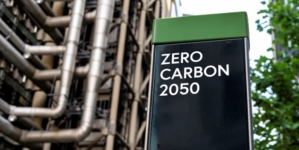-
Combilift Unveils the 2025 Christmas video “Twelve Days of Christmas” – with a Twist! - 10 hours ago
-
Scurri recognised by G2 for excellence in user experience, support and adoption - 13 hours ago
-
AI startup Onton raises $7.5M to reinvent the way the world discovers and decides what to buy - November 26, 2025
-
Forklift Market Positions for Recovery as Confidence Expected to Build from 2026 - November 26, 2025
-
PROCare achieves 300% order capacity increase and 99% picking accuracy with Forterro’s ERP solution, Orderwise - November 26, 2025
-
DHL boosts operational efficiency and customer communications with HappyRobot’s AI Agents - November 25, 2025
-
STENA LINE TEAMS UP WITH CAMERA TELEMATICS TO DRIVE SAFETY IMPROVEMENTS AT IRISH SEA PORTS - November 25, 2025
-
Stuut Technologies Raises $29.5 Million Series A Led by Andreessen Horowitz to Automate Accounts Receivable Work - November 20, 2025
-
INCREASED DIGITAL INVESTMENT REQUIRED TO KEEP PACE WITH 2026 CUSTOMS CHANGES - November 19, 2025
-
FULFILMENT SOLUTIONS FOR SPORTS MERCHANDISE: KEEPING OUR EYE ON THE GAME - November 19, 2025
Time for facilities managers to see the light
When it comes to improving lighting systems, some facilities managers apply the same logic as they would to changing a simple light fitting within their home and, as a result, too many industrial and office buildings are poorly lit and far more expensive to run than they should be.
That’s the view of Steve Gardner, sales director of Leicestershire-based luminaire specialist, Ecolighting.
“Of course, facilities managers cannot be expected to be experts in everything, but considering the impact that the wrong type of lighting can have on a building’s working environment and, indeed, a company’s energy bill, it is perhaps surprising that some managers do not take more time to understand the lighting options available to them when they are tasked with upgrading a site’s luminaires,” says Steve Gardner.
He continues: “Too many companies – of all sizes – employ a local electrician that will install the fittings he gets from a local wholesaler whose main interest is shifting units. Very little thought is given to the lighting system as a whole and, as a result, over time, buildings end up with a ‘mish mash’ of light fittings that deliver inadequate light and burn more energy than is necessary.”
“In a lot of cases there is an assumption that as long as sodium luminaires have been replaced with LED fittings the job is done, but there is so much more that can be achieved by taking a holistic approach.”
“For example, from the outset, it is important to consider if energy could be saved by fitting occupancy sensors instead of just changing the fittings? Does the position of the fittings provide uniform light output across the building? By reducing the number of fittings can light output be sustained or even improved as well as reducing costs?”
“These are the sort of issues that are all too rarely considered and, as a result, lighting quality and energy efficiency is compromised.”
Steve Gardner concludes: “Lighting is one of the biggest consumers of energy and by not fully exploring all of the options when its time to upgrade a site’s luminaires, facilities managers risk wiping thousands of pounds off of their employer’s bottom line every year.”























